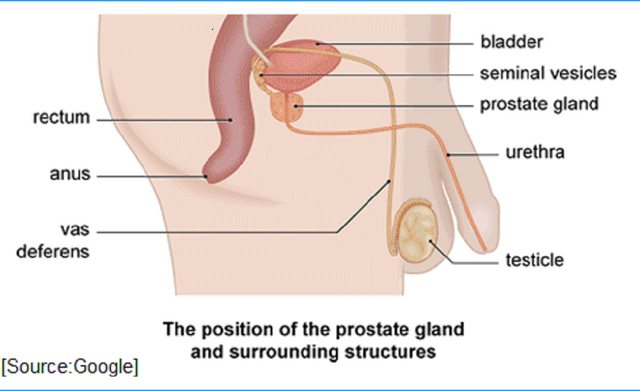Addressing the Global Prostate Problem: A Comprehensive Solution
The prostate gland, a vital part of the male reproductive system, has become a significant concern worldwide. Prostate problems affect men of all ages and can have a profound impact on their quality of life. From benign conditions such as prostatitis and benign prostatic hyperplasia (BPH) to the more severe issue of prostate cancer, these conditions require attention and comprehensive solutions. In this article, we will explore the world prostate problem and discuss potential solutions to mitigate its impact on men's health.

Understanding the Prostate Problem:
✔️ Benign Prostatic Hyperplasia (BPH): BPH is the most common prostate problem affecting men, particularly as they age. It involves the non-cancerous enlargement of the prostate gland, leading to symptoms like frequent urination, weak urine flow, and incomplete bladder emptying. Lifestyle modifications, medication, and surgical interventions are available treatment options.
✔️ Prostatitis: Prostatitis refers to inflammation or infection of the prostate gland, causing discomfort, pain, and urinary symptoms. It can be bacterial or non-bacterial in nature. Antibiotics, pain management, and lifestyle changes are employed to alleviate symptoms and resolve the infection.
✔️ Prostate Cancer: Prostate cancer is a leading cause of cancer-related deaths in men worldwide. It develops when abnormal cells grow uncontrollably in the prostate gland. Early detection through regular screenings, such as prostate-specific antigen (PSA) tests and digital rectal examinations (DRE), is crucial for successful treatment. Treatment options include surgery, radiation therapy, chemotherapy, hormone therapy, and immunotherapy.
Solutions to the Prostate Problem:
✔️ Education and Awareness: Raising awareness about prostate health and the importance of regular screenings is paramount. Governments, healthcare organizations, and non-profit entities should collaborate to implement educational campaigns targeted at men, encouraging them to undergo routine check-ups and providing accurate information about the prostate problem.
✔️ Enhanced Research: Increased investment in prostate-related research is essential to better understand the causes, prevention, and treatment of prostate conditions. Governments, pharmaceutical companies, and research institutions should allocate resources to support studies that aim to develop more effective diagnostic tools, treatment options, and targeted therapies for prostate cancer.
✔️ Accessible Healthcare Services: Improving access to healthcare services, particularly in underserved areas, is vital. Governments should prioritize the development of healthcare infrastructure, training of healthcare professionals, and the availability of affordable treatment options for prostate-related conditions. Telemedicine and remote healthcare services can play a significant role in reaching out to men in remote locations.
✔️ Lifestyle Modifications: Encouraging healthy lifestyle habits can help prevent and manage prostate problems. Regular exercise, a balanced diet rich in fruits, vegetables, and whole grains, and maintaining a healthy weight are all factors that contribute to prostate health. Reducing smoking and alcohol consumption can also mitigate the risk of developing prostate conditions.
✔️ Support Groups and Counseling: Establishing support groups for men diagnosed with prostate conditions can provide emotional support, share experiences, and offer guidance during the treatment journey. Counseling services can help individuals cope with the psychological and emotional challenges associated with prostate-related diagnoses.
Conclusion:
The world prostate problem demands our attention and concerted efforts to improve men's health globally. By fostering awareness, enhancing research, providing accessible healthcare services, promoting healthy lifestyles, and offering support systems, we can address this pressing issue effectively. It is essential for individuals, communities, healthcare professionals, and policymakers to collaborate in creating a comprehensive solution that ensures early detection, timely treatment, and improved outcomes for men facing prostate-related challenges.
|
|
Source